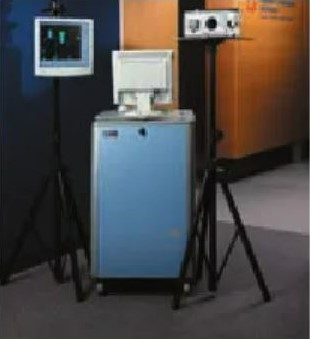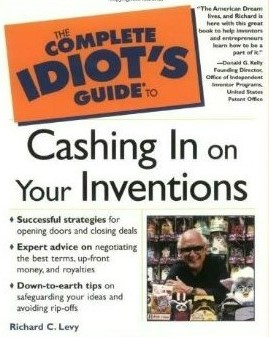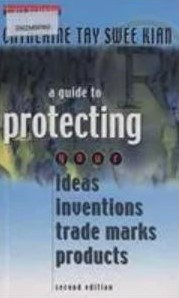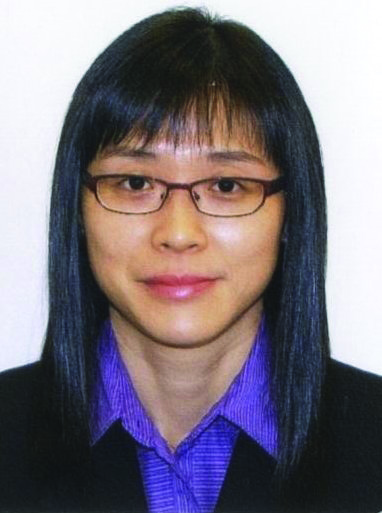Fostering an Inventive Spirit in the City State
“Invention is the first occurrence of an idea for a new product or process, while innovation is the first attempt to carry it out into practice…”. Invention stems from vision, and vision is followed by motivation, which encourages invention.
Invention and Innovation
According to Fagerberg, Mowery and Nelson (2005), there is a distinction between invention and innovation: “Invention is the first occurrence of an idea for a new product or process, while innovation is the first attempt to carry it out into practice… In many cases, however there is a considerable time lag between the two. While inventions may be carried out anywhere, for example in universities, innovations occur mostly in firms… To be able to turn an invention into an innovation, a firm normally needs to combine several different types of knowledge, capabilities, skills and resources.
An example of an inventive person is Leonardo da Vinci. He embodies the very spirit of invention. Leonardo lived in the Renaissance Period (1400 – 1600 CE) where a time of great cultural advances and explosion of knowledge dissemination were brought on by printing techniques. This self-taught man researched and formulated ideas and plans in a multitude of disciplines that ranged over anatomy, botany, science and technology, and the visual arts. The unique record of “word and image” from his detailed manuscripts allows us a glimpse into his incredible mind. Most significantly, it expresses what men and women of the time felt and thought about the machines and tools and used for greater purposes such as constructing churches, palaces and machines for warfare and transportation. (Farago, 1999)
Vision, Motivation and Necessity
More often than not, invention stems from vision. In 1819, Sir Stamford Raffles saw the unrealised potential in a small fishing village and Singapore was founded as a British trading post on the Straits of Malacca. From then on, Singapore grew from a colonial outpost into the world’s busiest port (Drysdale, 1984; Turnbull, 1989; Chew & Lee, 1991).

Vision is followed by motivation, which encourages invention. The early Singapore settlers were inventive in their thinking – they endured hardship to build their lives in a foreign land as they saw opportunities for economic and social advancement.
Necessity breeds invention, bringing ideas to fruition. Early settlers were forced to build roads and towns to thrive in the harsh environment. During the Severe Acute Respiratory Syndrome (SARS) outbreak, ST Electronics and the Defence Science and Technology Agency (DSTA) adapted a thermal scanner originally meant for military use. It was used at the airport, immigration checkpoints, ministries and hospitals to scan large groups of people simultaneously for high temperature and proved an important tool in the management of SARS. The system was named by TIME magazine as one of the coolest inventions in 2003 (Channelnewsasia, 11 Nov 2003). Singapore has greatly benefited from knowledge and technological transfers from multinational corporations and foreign talent from developed countries. In advancing towards a knowledge-based economy, the ongoing creation of ideas and inventions by institutions and people is crucial. This is recognised by the Singapore government, which invests heavily in research and development, and has expanded its initiatives in developing Singapore into a regional Intellectual Property Hub (Ministry of Trade and Industry, 2006).
Schools also attempt to cultivate desired attributes and mindsets such as intellectual curiosity, self-reliance, ruggedness, creativity and community spirit. The Tan Kah Kee Young Inventors’ Award, which has been in existence since 1986, has sparked imaginations among students and stimulated them to invent things. Tertiary education in science and technology fields at university and polytechnic levels is strengthened with the encouragement of research and knowledge creation.
A wide range of support initiatives is offered to individuals eager to develop functional prototypes or start up new ventures. Among them are: Venture Investment Support for Start-ups (VISS), The Startup Enterprise Development Scheme (SEEDS), Technopreneur Investment Incentive Scheme (TII), The Enterprise Challenge Scheme (TEC), Global Startup @ Singapore Business Plan Competition, Hub of Technopreneurs Spots (HOT Spots), Singapore Innovation Award (I-Award) and Global Entrepolis@Singapore.
Over the past decade, Singapore’s intellectual assets have grown significantly. Patent applications increased sharply from 1,818 in 1994 to 8,000 in 2003 (Straits Times, 18 Nov 2004). The 2004 annual R&D survey conducted by Agency for Science, Technology and Research (A*STAR) reported that the “numbers of patent applications and awards increased by 26% and 30% respectively from 1,001 and 460 in 2003 to 1,257 and 599 in 2004”. In the same year, A*STAR filed over 120 patents worldwide (Straits Times, 29 Jul 2005).
It is often said that Singaporeans are risk averse and lack creativity. A prevailing culture of failure-intolerance may have quelled many a desire to experiment and make changes. To add economic value to a new or improved product or service, one needs to risk resources (natural, human and capital) to bring it to the market. Vandenborre (2003) claims “we are still at a very early stage of entrepreneurship compared to the United States. At the same time, because we lack the critical market size, we have to think globally almost instantaneously. What we need is to develop a more efficient capital market infrastructure for smaller companies”. He believes that entrepreneurship is a mindset that could be “nurtured and developed” by reaching out to students in schools and tertiary institutions, and by organising entrepreneurship programmes for the adult workforce.
Through the early years of industralisation, the city-state has transformed itself into a thriving knowledge economy, supported by strong intellectual property laws, an educated workforce, quality research and development institutions, and low barriers to trade and foreign investments. There is a real sense of survival through innovation for both economic and security reasons.
There are hundreds of books, reference and online resources to help budding inventors better understand the invention and innovation process – idea generation, problem solving to business 101, general marketing to safeguarding intellectual property through patents and trademark. Here are some of the resources:
BOOKS

Richard Levy, A Complete Idiot’s Guide to Cashing in on Your Inventions (Indianapolis, Ind.: Alpha Books, 2002). (Call no. R 346.73048 LEV)
Levy shares his experiences in bringing his many products to market successfully. He offers tips on how to profit from one’s invention and gives advice on how to avoid pitfalls, secure patent protection and licensing, develop prototypes and negotiate deals and contracts.

Catherine Tay, A Guide to Protecting Your Ideas, Inventions, Trade Marks & Products (Singapore: Times Editions/Marshall Cavendish, 2004). (Call no. RSING 346.5957048 TAY)
This publication explains the “do’s” and “don’ts” and provides essential information on protecting ideas and inventions while helping one navigate the labyrinth of concepts, rules and laws in Singapore.

Ernest Gundling, The 3M way to Innovation: Balancing People and Profit (Tokyo: Kodansha International, c2000). (Call no. RBUS 658.4063 GUN)
3M has always been held up as the role model of an innovative organisation. This book provides invaluable insights into the principles and best practices that have kept 3M on the cutting edge.
DATABASES
Industry-specific journals as well as market intelligence are useful to gauge the market potential of your inventions. These are accessible from online databases at all multimedia stations in the Library:
EbscoHost Business Source Premier provides full text business journals and publications in the areas of management, taxation, marketing, sales, economics and finance.
Economist Intelligence Unit (EIU) provides analyses of political and economic trends and a historical context of current events in nearly 200 countries. Includes a fortnightly business brief on doing business in Asia.
Euromonitor’s Global Market Information Database (GMID) offers key business intelligence on countries, companies, markets and consumers.
Factiva allows access to a deep archive of news and business information.
Engineering Information Village (Ei Village) is a virtual community for engineers, created to provide information needed to solve problems and keep up to date with trends and developments in the field of engineering. Includes access to databases, websites and libraries.
INTERNET
The US Patent & Trademark Office and Patent & Trademark Depository Library Association are websites devoted to resources to help inventors, https://www.uspto.gov/; https://www.ptdla.org/.
The Lemelson-MIT Invention Dimension website provides a wealth of inventor resources including patent guidelines and links to many online invention resources, https://lemelson.mit.edu/.
License Finder allows one to search for the latest information on licenses granted and available licensers. It also features articles about licensing opportunities and trade shows, https://www.gobusiness.gov.sg/licences/find-licence-by-sector/.
Enterpreneur has many useful articles on getting started, inventors’ success stories, smart ideas and more, http://entrepreneur.com/.
A host of activities will be held at the National Library in August. Organised in collaboration with the Economic Development Board and its partners, the events comprise exhibitions, information sharing and talks on hot topics by homegrown inventors. The meetings will allow inventors to find out more about the support and guidance that is available to them, pick up tips and meet other inventors in an informal environment.

Senior Reference Librarian
Lee Kong Chian Reference Library
REFERENCES
Alain Vandenborre, Proudly Singaporean: My Passport to a Challenging Future (Singapore: SNP Editions, 2003). (Call no. RSING 959.5705 VAN)
“Annual R & D Survey,” Agency for Science, Technology and Research, accessed 9 May 2004, https://www.a-star.edu.sg/News/national-survey-of-rie.
“Big Patent Player Sets Up Shop in Biopolis,” Straits Times, 18 November 2004, 5. (From NewspaperSG)
C.M. Turnbull, A History of Singapore, 1819–1988 (Singapore: Oxford University Press, 1989). (Call no. RSING 959.57 TUR)
Claire Farago, ed., Leonardo’s Science and Technology: Essential Readings for the Non-Scientist (London: Garland Pub, 1999). (Call no. R 509.2 LEO)
David Boey, “US Award for Team Behind Fever Scanner,” Straits Times, 10 September 2004, 7. (From NewspaperSG)
Ernest C.T. Chew and Edwin Lee, eds., A History of Singapore (Singapore: Oxford University Press, 1991). (Call no. RSING 959.57 HIS)
Jan Fagerberg, David C. Mowery and Richard R. Nelson, eds., The Oxford Handbook of Innovation (New York: Oxford University Press, 2005). (Call no. RBUS q658.4063 OXF)
John Drysdale, Singapore, Struggle for Success (Singapore: Times Books International, 1984). (Call no. RSING 959.57 DRY)
Khushwant Singh, “Book on Local Patent Law Launched,” Straits Times, 29 July 2005, 8. (From NewspaperSG)
Ministry of Trade and Industry, Science & Technology Plan 2010: Sustaining Innovation-Driven Growth (Singapore: Ministry of Trade and Industry, 2006)
T. Saywell, “4th Young Inventors Awards: Winners: Bronze,” Far Eastern Economic Review, 22 January 2004.
“Thermal Scanners Named as One of This Year’s Coolest Inventions,” Channel NewsAsia, 11 November 2003.

